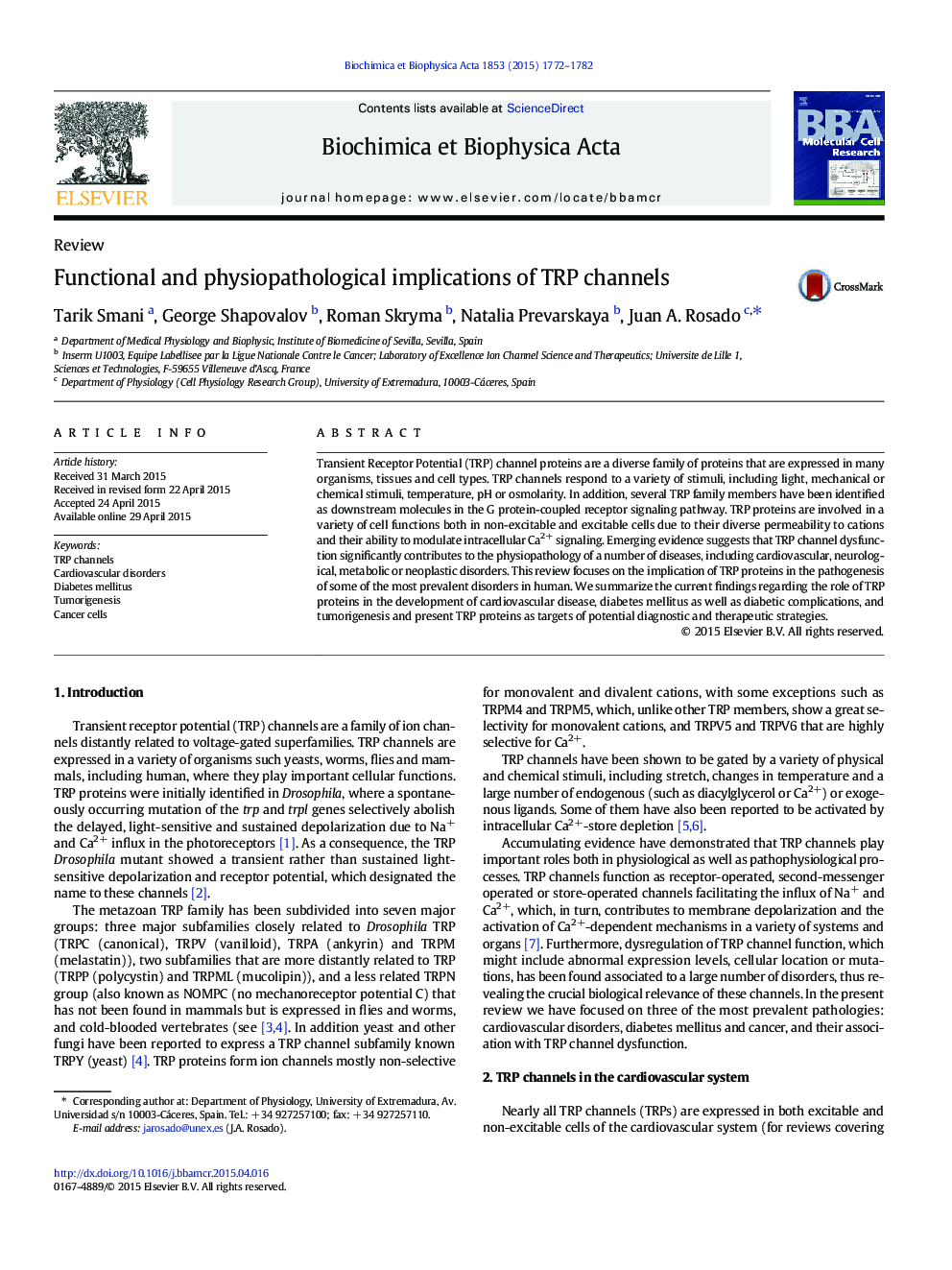| کد مقاله | کد نشریه | سال انتشار | مقاله انگلیسی | نسخه تمام متن |
|---|---|---|---|---|
| 1950446 | 1055642 | 2015 | 11 صفحه PDF | دانلود رایگان |

• TRP channel dysfunction contributes to the physiopathology of a number of diseases.
• TRP proteins are involved in cardiac hypertrophy and conduction disorders.
• The pathophysiology of diabetes mellitus and associated complications involves certain TRPs.
• TRP channels are involved in tumorigenesis.
• TRP proteins are candidate targets for potential diagnostic and therapeutic strategies.
Transient Receptor Potential (TRP) channel proteins are a diverse family of proteins that are expressed in many organisms, tissues and cell types. TRP channels respond to a variety of stimuli, including light, mechanical or chemical stimuli, temperature, pH or osmolarity. In addition, several TRP family members have been identified as downstream molecules in the G protein-coupled receptor signaling pathway. TRP proteins are involved in a variety of cell functions both in non-excitable and excitable cells due to their diverse permeability to cations and their ability to modulate intracellular Ca2+ signaling. Emerging evidence suggests that TRP channel dysfunction significantly contributes to the physiopathology of a number of diseases, including cardiovascular, neurological, metabolic or neoplastic disorders. This review focuses on the implication of TRP proteins in the pathogenesis of some of the most prevalent disorders in human. We summarize the current findings regarding the role of TRP proteins in the development of cardiovascular disease, diabetes mellitus as well as diabetic complications, and tumorigenesis and present TRP proteins as targets of potential diagnostic and therapeutic strategies.
Journal: Biochimica et Biophysica Acta (BBA) - Molecular Cell Research - Volume 1853, Issue 8, August 2015, Pages 1772–1782